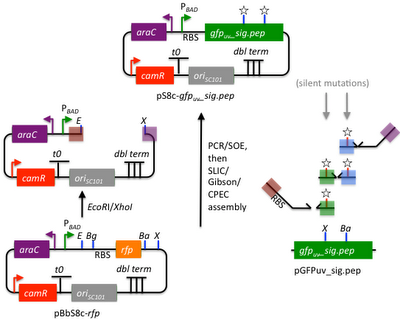 Many interesting applications of synthetic biology in space missions were discussed at the Synthetic Biology workshop held October 30-31, 2010 at NASA Ames in conjunction with the National Academies Keck Futures Initiative. Scientists from a variety of backgrounds came together to brainstorm solutions in an integrative approach. The most impressive aspect was how different areas of synthetic biology have been progressing enough to discuss ideas and techniques that could be applied to space missions in a robust way.
Many interesting applications of synthetic biology in space missions were discussed at the Synthetic Biology workshop held October 30-31, 2010 at NASA Ames in conjunction with the National Academies Keck Futures Initiative. Scientists from a variety of backgrounds came together to brainstorm solutions in an integrative approach. The most impressive aspect was how different areas of synthetic biology have been progressing enough to discuss ideas and techniques that could be applied to space missions in a robust way.
Environment enhancement
One of the most important areas that synthetic biology may be able to help with is in making space environments more manageable and habitable by humans. The regolith, the powdery blanket covering the moon and Mars, may likely need to be ameliorated into harder less dusty surfaces.
Biomining
Synthetic biology could be helpful in creating microbes to faster weather regolith/rock for an order of magnitude quicker release of bioessential elements such as Magnesium, Calcium, Potassium, and Iron. (related publications)
Biomaterials and self-building habitats
Synthetic biology could help to create microbes for use in building structures, both as scaffolds and by growing on scaffolds. Bacterially-generated alternatives to Portland cement (bricks made from bacteria, sand, calcium chloride, and urea) are currently being investigated, along with other plant-development inspired architectures.
New gene function
While the discovery of new mammalian genes has become saturated, the majority of newly sequenced ocean-based microbes continue to have novel gene functions. Some of these may be quite useful in space environments, for example, D. radiodurans, which can withstand significant radiation and rebuild its DNA when damaged.
Space economics – the Basalt Economy
The economics of space suggest that synthetic biological solutions might be developed more readily for space challenges, and later deployed on Earth as the technologies mature. The main constraint for space is developing in-situ solutions that are cheaper than lifting materials from Earth, as opposed to creating competitive products for Earth-based supply chains (e.g.; synthetic biofuel).
Tools
Whole human genome and metabiome sequencing, genome synthesis and assembly, and genetic design and proofing software (bioCAD) as shown in Figure 1 are all improving. A vast industry similar to that of semiconductor design and manufacture could likely develop for synthetic biology.











 Email me
Email me Twitter
Twitter MS Futures Group
MS Futures Group Data Visualization Wiki
Data Visualization Wiki Economic Fallacies
Economic Fallacies
